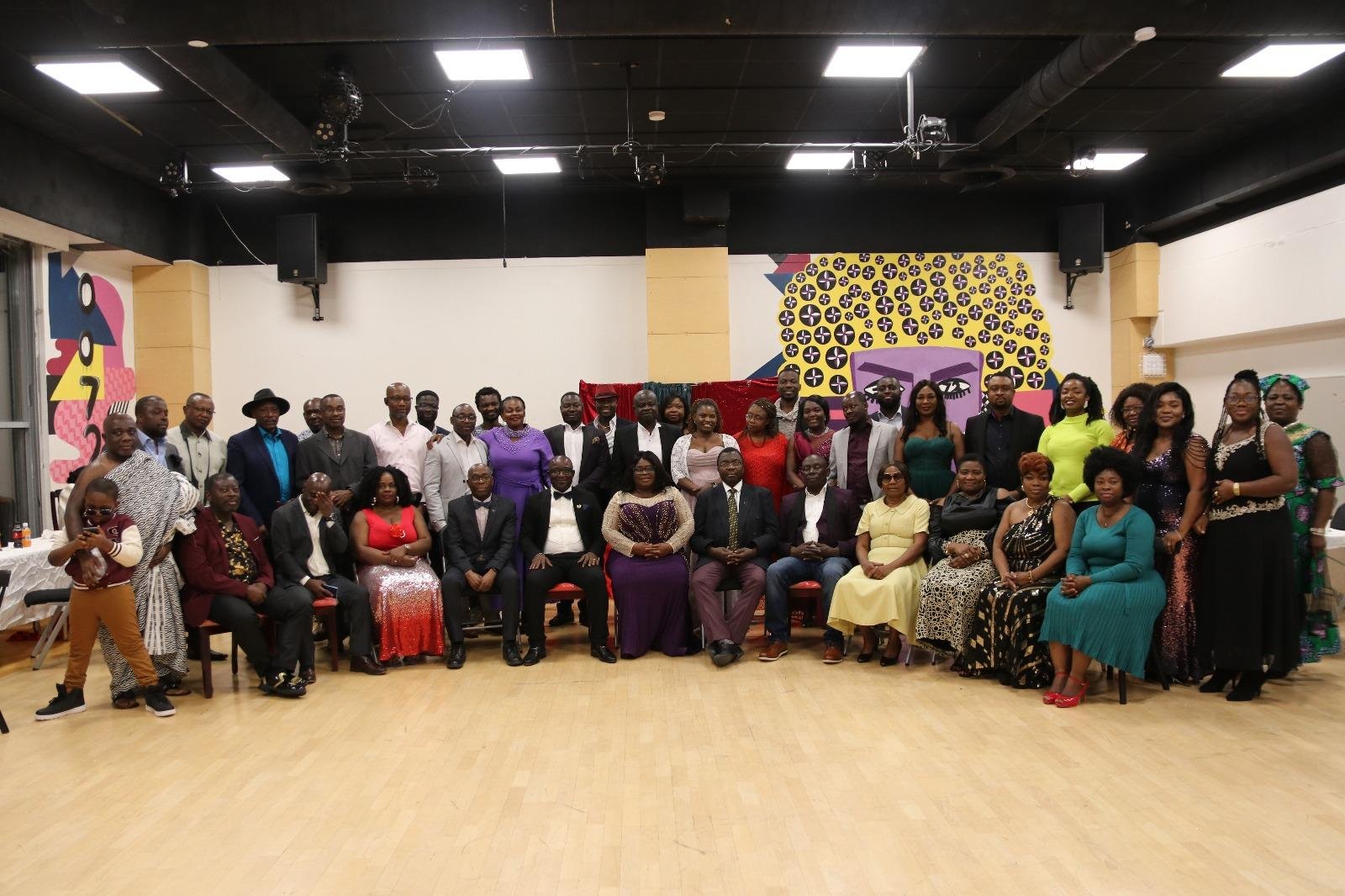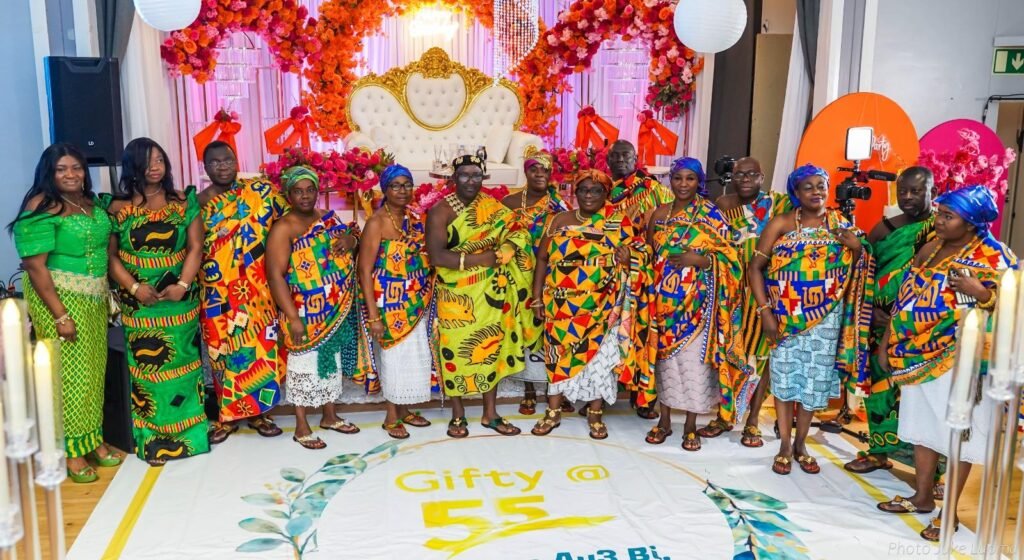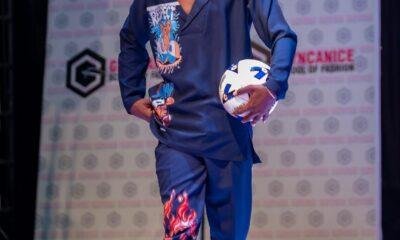Features
A focus on Asanteman Finland

Today, I continue my narration of personalities or institutions and their accomplishments as members of the Ghanaian Diaspora in Finland with a focus on the Asanteman Finland association.
The Asanteman association in Finland has chalked significant accomplishments and successes which must be made known to the public.
Formation
Before the current Asanteman Finland association was formed a few years ago, there existed the Asanteman Kuo Finland, which was established in early 2004 and registered at the Patent Registry in Helsinki in 2006.

The idea to form such an association came about following the desire of some Ghanaians from the Asante ethnic group to come together with the aim of supporting each other, and to ensure unity among its members and with others in the Finnish society.
Their first meeting was in the home of Mr Kwabena Nyamaa (nicknamed Blower), who later was appointed as the Abusuapanin (head of family) of the group. Unfortunately, this first group collapsed, but a new association was formed.
Structure and hierarchy
The Asanteman Finland has a unique structure of organisation. It operates the usual structure for organisations but also adopts the traditional Asante/Akan style of hierarchical structure in the same ways as how an Asante/Akan community or society is usually organised in Ghana.
Thus, the Asanteman Finland has a president, secretary, organising secretary, etc., who are each elected and run the day to day affairs of the association as the executive group.
This runs alongside the traditional leadership structure of the Chief, Queen-mother, Kurontihene, Abusuapanin, etc., details of which I will focus in my subsequent descriptions of the leadership structure of the Asanteman association (in terms of both the traditional hierarchy and the more formal, executive body style).
Projects and achievements
The Asanteman association has a number of projects they have engaged in to support people and other groups or institutions. In 2007, the old association donated digital blood pressure monitors to some hospitals in Ghana.
In 2011, the group supported the Akomadan Hospital by renovating part of the hospital’s building with roofing sheets. Also, in 2014 the association supported the Jachie Training Center for physically-challenged people, renovating their facilities. Members also donated hospital equipment to Assin Fosu, Mampongten, Agona Asamang, etc., as well as financial support to a hole-in-heart patient.
The new Asanteman association has also made considerable contributions. In 2021/2022, during the COVID-19 period, the group sent support to Ghana. Again, the association is cooperating with the larger group, Asanteman Europe, and the members are in the process of contributing towards the rehabilitation of the Okomfo Anokye Teaching Hospital in Kumasi, Ghana.
Role in the Ghanaian community in Finland
The Asanteman plays a prominent role in the Ghanaian community in Finland. The association was the first to be formed after the Ghana Union Finland. It is thus a pioneer in that sense of an association representing a Ghanaian ethnic group.
The association helps or gives support to its members who are bereaved as a way to commiserate with them and to help them organise the funeral. They arrange counselling and educative sessions to the youth such as to teach them the adowa dance and other traditional values.
It also engages in conflict resolution in other to maintain unity and peace in the group. The group also mobilises their members for various activities that help in integration efforts. For example, the leaders mobilise the other members, including the women in activities such as cooking together, sharing information and learning things from each other.
The Asanteman also collaborates with the Ghana Union Finland, an association for Ghanaian migrants in Finland whose aims include bringing together all Ghanaian migrants resident in Finland and promoting cultural activities in Finland for better intercultural and multicultural understanding.
Displaying a rich culture
When it comes to displaying part of a Ghanaian culture, the Asanteman is unmatchable, so to speak. Other groups representing the Brong Ahafo, Gadangbe, Mfantseman, Eastern Region, and Nzema all endeavour to portray the culture and values of their ethnic origins, but it can be said that the Asanteman remain the pioneer and tops in showcasing their rich culture of the Asante heritage.

They take a prominent position in enacting a “royal entry” at events organised by the Ghana Union Finland and other groups, where they display colourful kente attire adorned with ornaments, amidst traditional drumming and adowa dance.
Collaborations with other African groups in Finland, alliances abroad
The Asanteman collaborates with groups such as the Igbo association in Finland and other African nationalities at their events, where Asanteman Finland showcases the Asante/Ghanaian culture.
They are a prominent member of the Asanteman Europe, an umbrella association that seeks to bring together all Asanteman associations abroad. Asanteman Finland also collaborates with individual such associations in other European countries. Thank you!
GHANA MATTERS column appears fortnightly. Written in simple, layman’s terms, it concentrates on matters about Ghana and beyond. It focuses on everyday life issues relating to the social, cultural, economic, religious, political, health, sports, youth, gender, etc. It strives to remind us all that Ghana comes first. The column also takes a candid look at the meanings and repercussions of our actions, especially those things we take for granted or even ignore. There are key Ghanaian values we should uphold rather than disregard with impunity. We should not overlook the obvious. We need to search for the hidden or deeply embedded values and try to project them.
With Dr Perpetual Crentsil
Features
The Palestinian martyr-Little Hind Rajab
THE wickedness of some people in our world is gradually getting out of bounds. From local arena to international arena, reports of wicked acts that defies logic, is on the rise.
Russia has attacked Ukraine and as a result, the economies of many countries have been negatively impacted. Residential apartments which have no military purpose. Just sheer wickedness and cruelty.
After this came the Brutal attack on Gaza by the Israel Defence Forces. Hospitals were bombed, buildings were razed down and civilians were deliberately targeted which is a war crime according to the Geneva Convention.
The IDF will release pamphlets in the skies informing them to move to certain specified areas. They move there with their families only to be bombed again without warning.
It was one of such movement from one place to another that, the family of a 5 year Palestinian girl called Hind Rajab and her family, travelling in a vehicle, were shot at by an IDF Tank.
This wounded girl managed to call emergency services to come and save them.
The sad thing is that while this brave little girl kept talking to the emergency response person on the phone, telling them that they should come quickly and that she was afraid.
She further told the response team on phone that any time she tries to speak, blood comes into her mouth and it soils her dress and she dies not want her mum to scold her so they should come quickly.
The response team rushed as usual to her location but they were also shot and killed, the driver and his assistant, in a vehicle clearly marked as an ambulance. Ten days later when they got to her location, Hind Rajab and her family were dead and their vehicle was riddled with 335 bullets.
The wickedness with which the IDF waged the war against Hamas, the administrative authority in Gaza, was unbelievable, given the damage to civilians both collateral and in most cases deliberate.
There are reports of some Doctors from the US and other countries, who have described how children they attended to, who were brought in dead, had evidence of sniper bullets.
A report by one of the media platforms, indicated that one of the IDF snipers who died recently, had bragged about shooting children in the abdomen so they will suffer before dying.
What baffles me in all these atrocities, is why Jews who have been saved by a collective action of the world, from Hitler and his Nazis from destruction, infamously known as the Holocaust, is now visiting mayhem on others, namely the Palestinians.
One begins to wonder if Hitler was right after all and that he saw something that the rest of the world did not notice about the Jews. I must admit that it is not all Jews that are racist. It is the Zionist who are the problem with their Talmud which teaches that Jesus is burning in hot feaces.
They deliberately teach their children to hate other people who are not Jews especially the Palestinians. They do not consider the Palestinians as humans and therefore they believe they have the God given right to treat them anyway anyhow.
Hind Rajab’s death has pricked the conscience of the world and countries which used to blindly support Israel, are now putting pressure on them to observe a ceasefire as part of a peace negotiation.
Let the world through the UN show that it does not support barbarism and that the illegal occupation of Palestinian lands by Israel, must come to an end.
NB: ‘CHANGE KOTOKA INTERNATIONAL AIRPORT TO KOFI BAAKO INTERNATIONAL AIRPORT’
By Laud Kissi-Mensah
Features
Angioplasty: A comprehensive overview of the procedure and its applications
Angioplasty is a minimally invasive medical procedure used to widen narrowed or blocked arteries or blood vessels. The procedure involves the insertion of a catheter, a small tube, into the affected artery, followed by the inflation of a balloon to widen the artery. In some cases, a stent, a small mesh tube, may be placed to keep the artery open.
Indications for Angioplasty
Angioplasty is often used to treat conditions such as:
1. Coronary artery disease: Narrowing or blockage of the coronary arteries, which supply blood to the heart.
2. Peripheral artery disease: Narrowing or blockage of the arteries in the legs or arms.
3. Atherosclerosis: Buildup of plaque in the arteries, which can lead to narrowing or blockage.
The Angioplasty Procedure
The angioplasty procedure typically involves the following steps:
1. Preparation: The patient is given local anesthesia and may be sedated to help them relax.
2. Insertion of the catheter: A small incision is made in the skin, and a catheter is inserted into the affected artery.
3. Guidance: The catheter is guided to the affected area using imaging techniques such as fluoroscopy or angiography.
4. Inflation of the balloon: The balloon on the catheter is inflated to widen the artery.
5. Stent placement: A stent may be placed to keep the artery open.
6. Removal of the catheter: The catheter is removed, and the incision site is closed.
Benefits of Angioplasty
Angioplasty offers several benefits, including:
1. Improved blood flow: Angioplasty can help improve blood flow to the affected area, reducing symptoms such as chest pain or leg pain.
2. Minimally invasive: Angioplasty is a minimally invasive procedure, which means that it requires only a small incision and can reduce recovery time.
3. Reduced risk of complications: Angioplasty can reduce the risk of complications associated with more invasive surgical procedures.
Potential Risks and Complications
While angioplasty is generally a safe procedure, there are potential risks and complications, including:
1. Bleeding or hematoma: Bleeding or bruising at the incision site.
2. Artery damage: Damage to the artery during the procedure.
3. Restenosis: Narrowing or blockage of the artery again after the procedure.
Conclusion
Angioplasty is a highly effective procedure for treating narrowed or blocked arteries or blood vessels. While it carries some risks and complications, the benefits of improved blood flow and reduced symptoms make it a valuable treatment option for many patients.
References:
1. American Heart Association. (2020). Angioplasty and Stenting.
2. National Heart, Lung, and Blood Institute. (2020). Angioplasty and Stent Placement.
3. Mayo Clinic. (2020). Angioplasty: What You Need to Know.
4. Journal of the American College of Cardiology. (2019). Angioplasty and Stenting in Patients with Coronary Artery Disease.
This article provides a comprehensive overview of angioplasty, including its indications, procedure, benefits, and potential risks and complications.
By Robert Ekow Grimmond-Thompson
Join our WhatsApp Channel now!
https://whatsapp.com/channel/0029VbBElzjInlqHhl1aTU27














